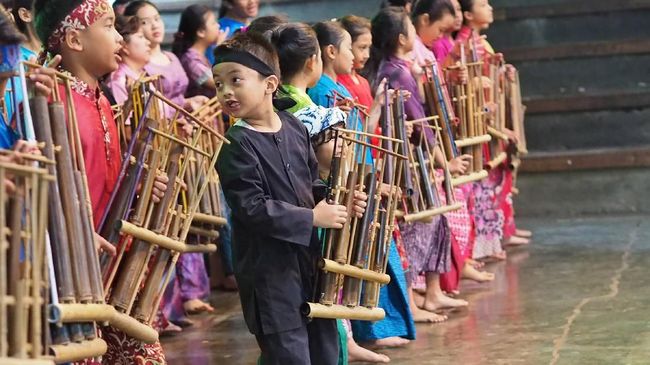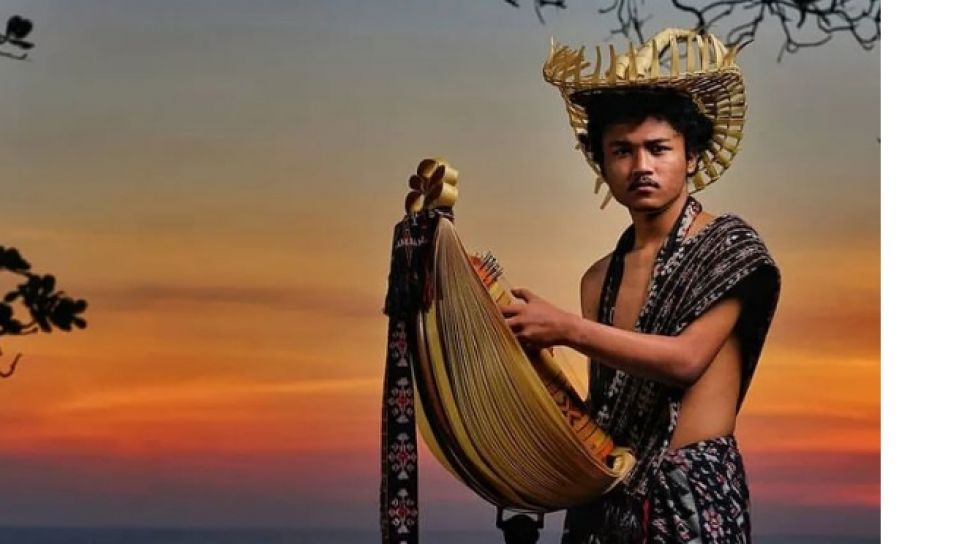Indonesia is a country known for its rich cultural heritage, and one of the most significant aspects of its culture is its traditional music. Traditional music in Indonesia reflects the country's diversity, with its numerous ethnic groups, each contributing their unique musical traditions and instruments. These traditional musical forms have been passed down through generations, preserving the cultural identity and history of different regions.
Indonesian traditional music encompasses a wide range of genres, styles, and instruments, each associated with specific communities and cultural practices. From the intricate rhythms of gamelan to the soulful melodies of suling and the expressive vocals of dangdut, traditional music in Indonesia is a testament to the country's cultural depth and artistic prowess.
The use of traditional instruments such as gamelan orchestras, bamboo flutes, drums, and stringed instruments adds a distinct character to the music. Moreover, traditional music often accompanies various traditional dances, rituals, and ceremonies, serving as a means of storytelling, celebration, and spiritual expression.
Indonesian traditional music not only serves as a source of entertainment but also holds great cultural and historical significance. It acts as a bridge between the past and the present, connecting people to their ancestral roots and preserving cultural heritage for future generations.
In this discussion, we will explore some of the prominent traditional music forms in Indonesia, highlighting their unique features, cultural contexts, and the role they play in Indonesian society. By delving into the captivating world of Indonesian traditional music, we can gain a deeper understanding and appreciation for the country's cultural diversity and artistic achievements.
Indonesia is rich in traditional music, reflecting its diverse cultural heritage and ethnic groups. Here are a few notable examples of Indonesian traditional music:
1. Gamelan:
Gamelan is an ensemble music form consisting of various percussion instruments, such as metallophones, gongs, drums, and bamboo flutes. It is prevalent throughout Indonesia, particularly in Java and Bali. Gamelan music is known for its intricate rhythms, melodies, and interlocking patterns.
2. Keroncong:
Keroncong is a genre of Indonesian music that originated in the Portuguese-influenced communities of Java in the late 19th century. It typically features string instruments, such as ukuleles, guitars, and violins, accompanied by vocals. Keroncong is characterized by its mellow and nostalgic sound.
3. Angklung:
Angklung is a traditional musical instrument made of bamboo tubes attached to a bamboo frame. It is native to West Java and has become popular worldwide. Angklung is played by shaking the instrument, producing different tones. It is often used in group performances, creating harmonic melodies.
4. Dangdut:
Dangdut is a popular genre of Indonesian music that blends traditional and modern influences. It combines elements of Indian, Malay, Arabic, and Western music styles. Dangdut is known for its rhythmic beats, catchy melodies, and expressive vocals. It has a strong presence in Indonesian popular culture.
5. Sasando:
Sasando is a traditional stringed instrument from the island of Rote in East Nusa Tenggara. It consists of a bamboo tube with strings attached to it, played by plucking the strings while rotating the instrument. Sasando produces soft and enchanting sounds, often used in ceremonial and folk music.
6. Tarling:
Tarling is a folk music genre originating from the Sundanese community in West Java. It combines traditional Sundanese melodies with influences from Indian and Middle Eastern music. Tarling music is often accompanied by a violin, tambourine, and flute, with lyrics that reflect everyday life and romantic themes.
7. Wayang Kulit:
Wayang Kulit is a traditional form of shadow puppetry that combines storytelling, music, and visual arts. The puppeteer, known as a dalang, manipulates intricately designed leather puppets behind a backlit screen while accompanied by a gamelan orchestra. The music enhances the dramatic narrative of the performance.
8. Suling:
Suling is a traditional bamboo flute found in various regions of Indonesia. It is a simple instrument with a melodious tone and is played by blowing across a hole at the top while covering or uncovering finger holes along its length. The suling is commonly used in traditional ensembles and folk music.
9. Rebab:
The rebab is a two-stringed instrument played with a bow. It has a body made from a coconut shell or wood and is covered with a snake or goat skin. The rebab is widely used in traditional Indonesian music, especially in the gamelan ensembles, and is known for its expressive and soulful sound.
10. Talempong:
Talempong is a traditional musical ensemble from West Sumatra, consisting of small kettle gongs placed in a row. Each gong is struck with a mallet to produce specific notes. Talempong music is often performed at cultural events and ceremonies, and its lively rhythms create a festive atmosphere.
11. Barong Dance Music:
The Barong dance is a traditional Balinese dance that tells the story of the eternal struggle between good and evil. The accompanying music features a gamelan ensemble, including metallophones, gongs, and drums. The dynamic and vibrant music complements the energetic movements of the dancers.
12. Kolintang:
Kolintang is a traditional musical instrument originating from the Minahasa region in North Sulawesi. It consists of a row of wooden slabs or metal plates arranged on a stand. The player strikes the plates with small mallets to produce different pitches. Kolintang music is often played in community gatherings and cultural events.
13. Jaipongan:
Jaipongan is a popular traditional music and dance form from West Java. It combines elements of traditional Sundanese music with modern influences, incorporating lively rhythms and energetic movements. Jaipongan music often features a combination of traditional instruments, such as the kendang (drum), suling (flute), and kecapi (zither), with modern instruments like electric guitars and synthesizers.
14. Bedhaya:
Bedhaya is a sacred dance and music tradition that originated in the royal courts of Central Java. It is performed as a form of devotion and is closely associated with the Javanese royal palaces. The music accompanying the Bedhaya dance typically involves a gamelan ensemble playing complex and mesmerizing melodies.
15. Marawis:
Marawis is a traditional Islamic music form popular among the Arab-descendant communities in Indonesia, particularly in Jakarta and Aceh. It combines Arabic musical elements with local Indonesian styles. Marawis ensembles typically include a combination of percussion instruments, such as tambourines, hand drums, and frame drums, accompanied by vocals.
16. Ronggeng:
Ronggeng is a traditional dance and music form from the Sundanese community in West Java. It is often performed at social gatherings and celebrations. Ronggeng music features a lively ensemble comprising instruments like the rebab, kendang, suling, and gongs. The dancers interact with the musicians, creating an engaging and dynamic performance.
17. Cakalele:
Cakalele is a traditional war dance and music form from the Maluku Islands in eastern Indonesia. It combines energetic movements, martial arts-inspired choreography, and percussion instruments like drums and gongs. Cakalele is performed during significant events and ceremonies, representing bravery, strength, and unity.
18. Tambur:
Tambur is a traditional string instrument from the Riau Islands in western Indonesia. It has a pear-shaped body with four or five strings, and it is played with a plectrum. Tambur music is often associated with Malay cultural traditions and is used in various social and cultural events.
19. Dondang Sayang:
Dondang Sayang is a traditional Malay musical form that originated in the state of Malacca and is also found in other parts of Indonesia, such as Riau and North Sumatra. It is characterized by improvised poetic singing accompanied by traditional instruments like the rebana (frame drum) and gendang (drum). Dondang Sayang often features themes of love, longing, and social commentary.
20. Pakarena:
Pakarena is a traditional dance and music form from the Bugis and Makassar ethnic groups in South Sulawesi. It is performed as a celebration of unity and harmony. The music typically includes traditional instruments such as the gendang (drum), seruling (flute), and gong, accompanied by rhythmic chanting and energetic dance movements.
21. Pencak Silat Music:
Pencak Silat is a traditional Indonesian martial art that is often accompanied by music during performances and demonstrations. The music for Pencak Silat usually consists of rhythmic percussion instruments such as drums, gongs, and bamboo instruments. The music enhances the movements of the practitioners and adds to the intensity and spectacle of the martial art.
22. Kuda Lumping:
Kuda Lumping is a traditional Javanese dance accompanied by music and often performed during festive occasions and cultural events. The dance involves dancers riding woven bamboo horses (representing horses possessed by spirits) and performing energetic movements to the accompaniment of gamelan music, drums, and chants.
23. Tarling Cirebon:
Tarling Cirebon is a traditional music form from Cirebon, West Java. It blends elements of traditional Sundanese music, Jaipongan, and dangdut. Tarling Cirebon is characterized by lively rhythms, expressive vocals, and the use of instruments such as the kecapi (zither), suling (flute), and kendang (drum).
24. Poco-poco:
Poco-poco is a popular traditional dance and music form from North Sulawesi. It originated from the Minahasa ethnic group and has gained popularity throughout Indonesia. Poco-poco music features a catchy and upbeat melody, often accompanied by instruments like the guitar, keyboard, and accordion. The dance movements are lively and involve synchronized group choreography.
Indonesian traditional music is a vibrant and integral part of the country's cultural tapestry. It represents the diversity and richness of Indonesia's ethnic groups and their unique musical traditions. From the enchanting melodies of gamelan to the lively rhythms of jaipongan, each traditional music form carries with it a distinct identity and cultural significance.
Through the traditional music of Indonesia, we can witness the fusion of indigenous elements with external influences, resulting in a harmonious blend of sounds, melodies, and rhythms. These musical traditions have been passed down through generations, serving as a means of cultural preservation, storytelling, and community bonding.
Indonesian traditional music not only captivates audiences with its artistic beauty but also serves as a reflection of the country's history, customs, and values. It enhances various cultural practices, including dances, rituals, and ceremonies, bringing people together and fostering a sense of identity and belonging.
As we explore and appreciate the rich tapestry of Indonesian traditional music, we gain a deeper understanding of the country's cultural heritage and the profound influence it has on the lives of its people. By celebrating and preserving these musical traditions, we contribute to the continuity and vitality of Indonesian culture.
In a rapidly changing world, it is essential to recognize and honor the significance of traditional music in preserving cultural diversity. Indonesian traditional music stands as a testament to the creativity, artistry, and resilience of the Indonesian people, and it serves as a source of inspiration and pride for generations to come.









